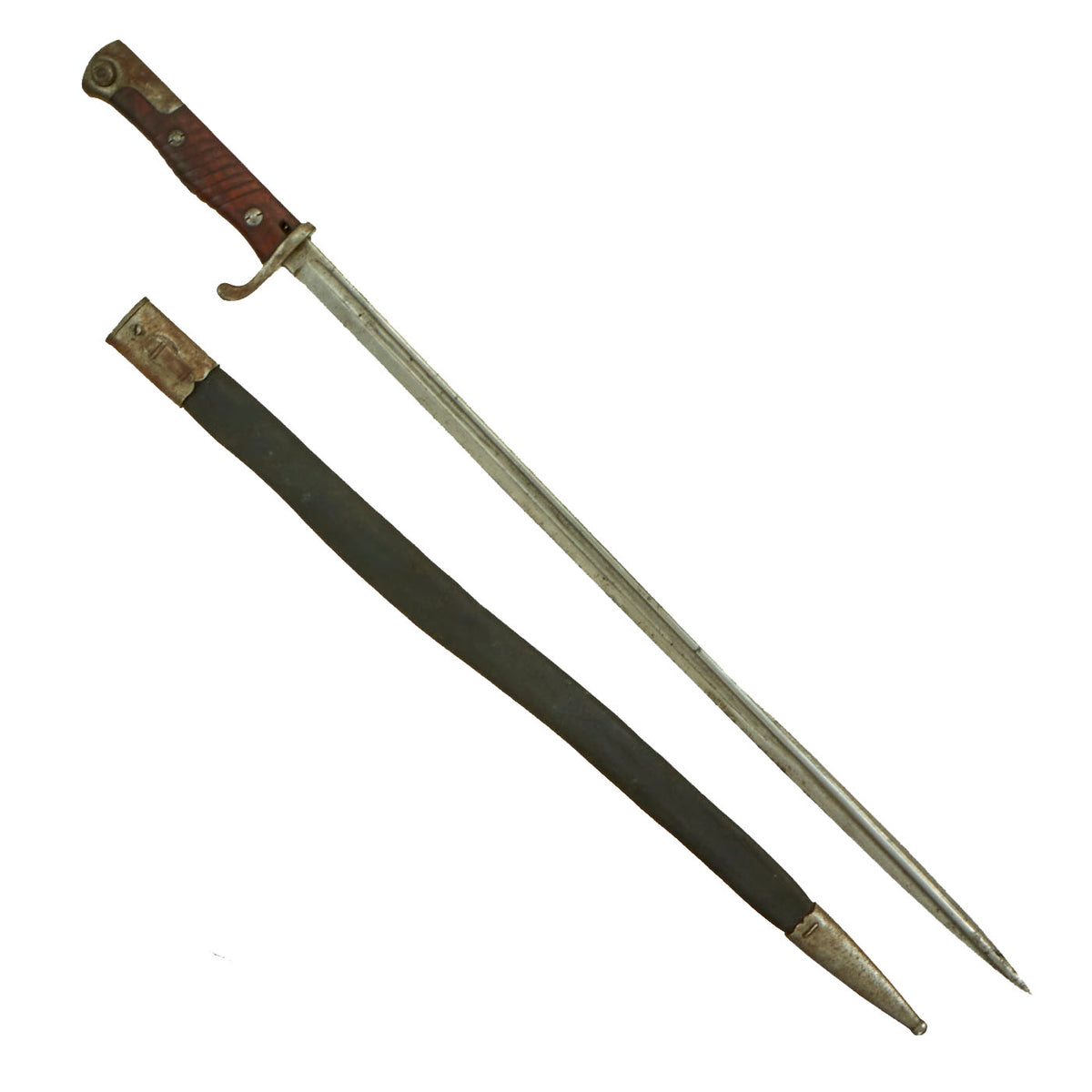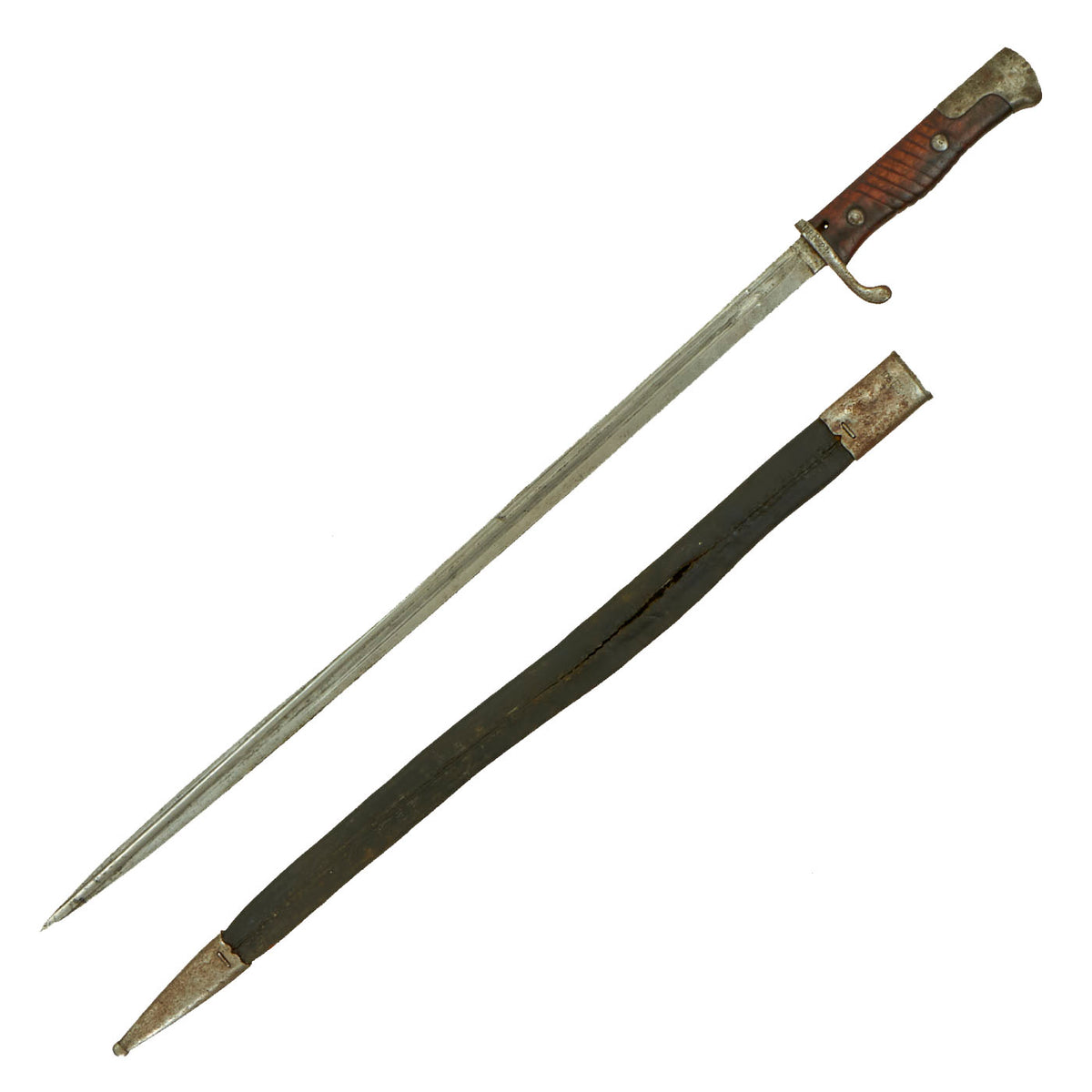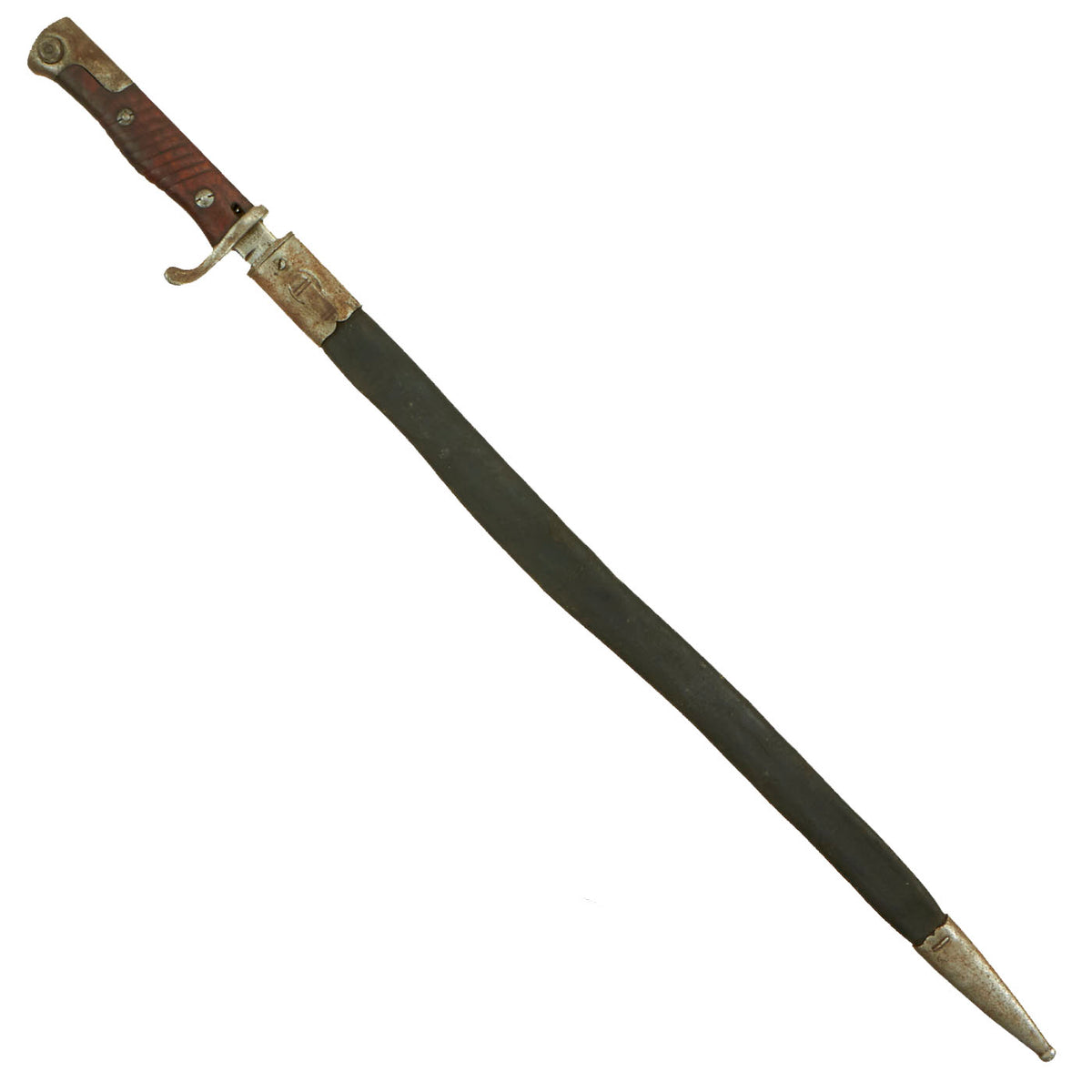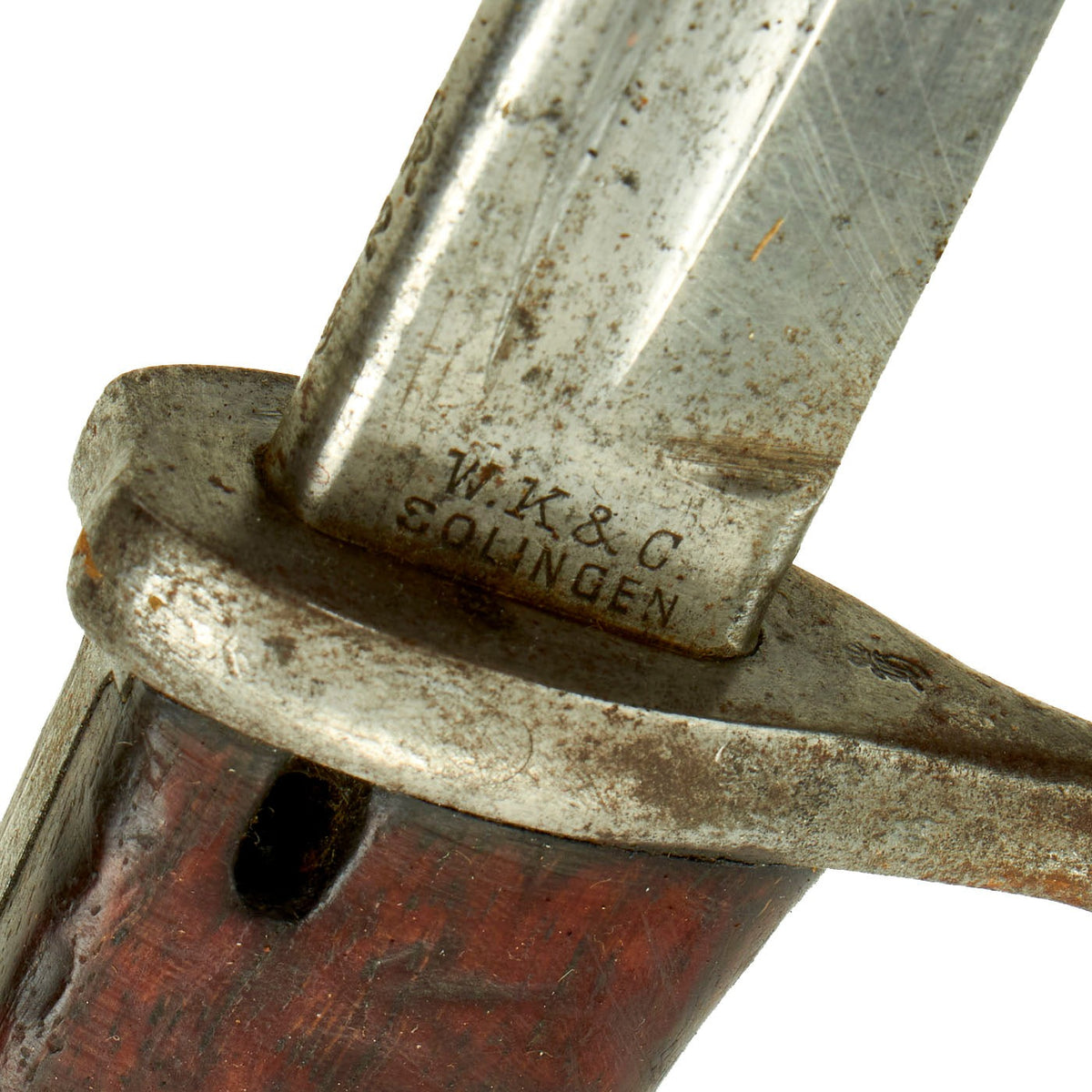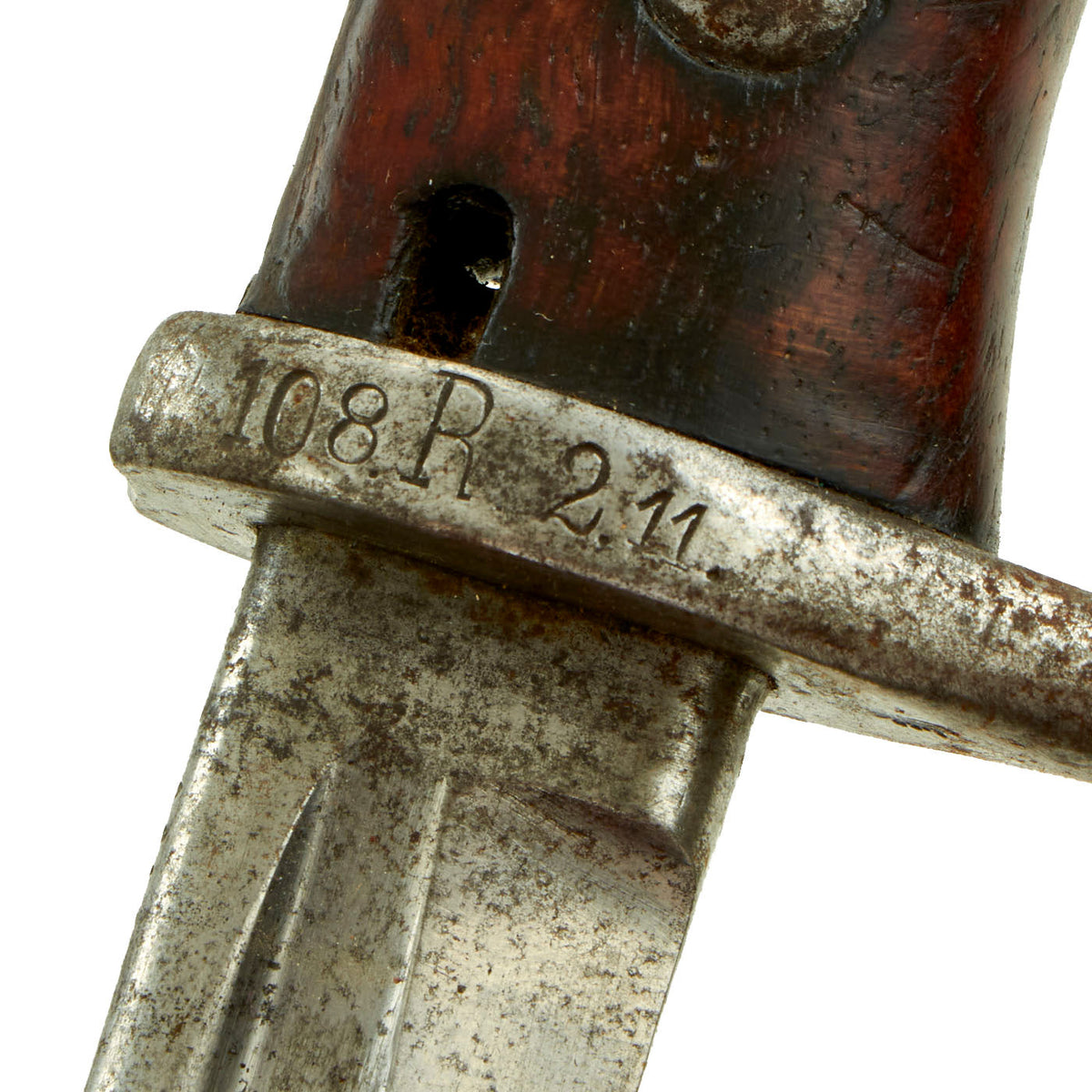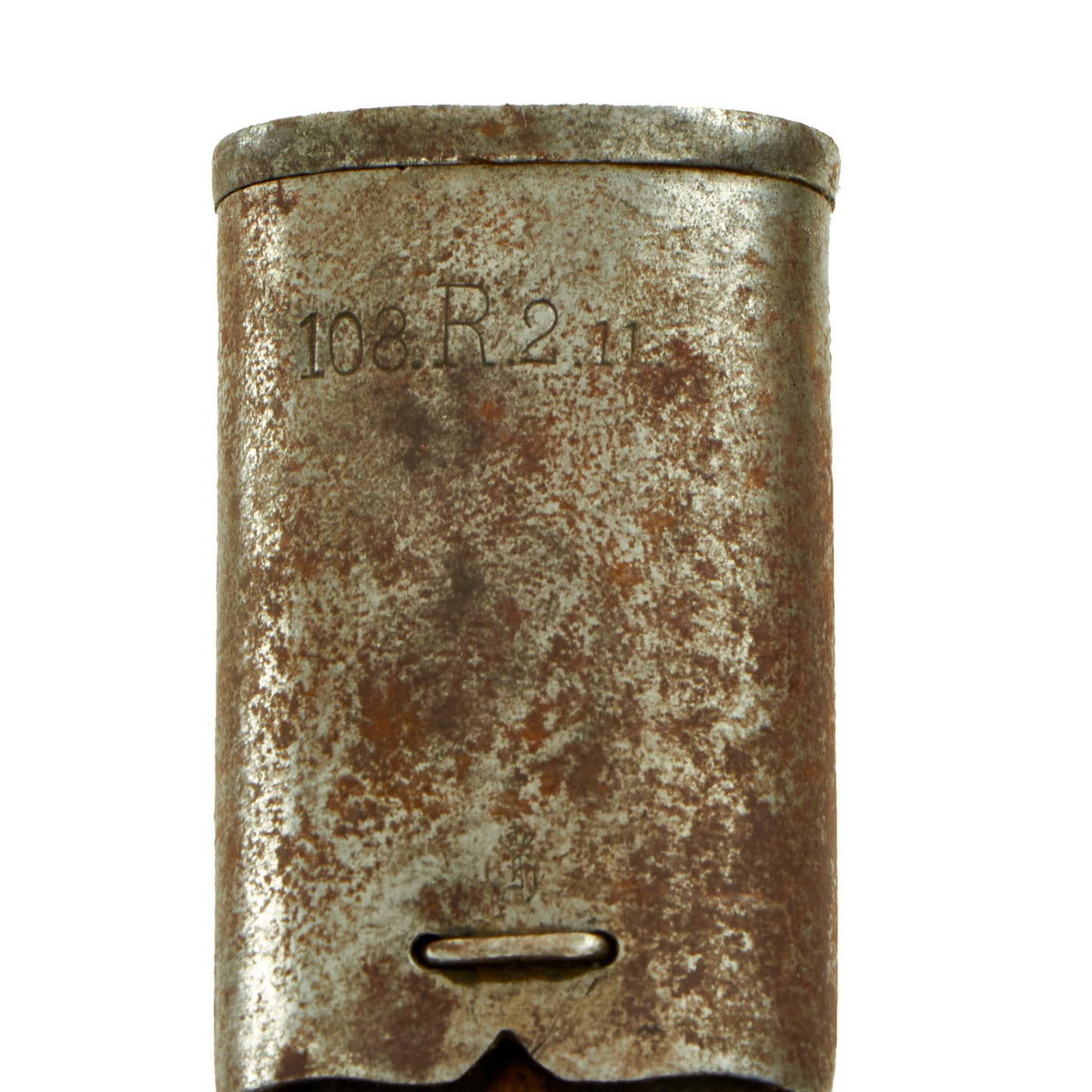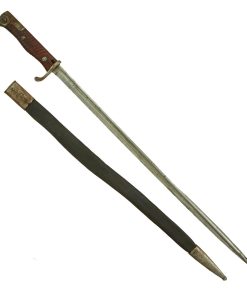Original German WWI Seitengewehr M1898 a/A GEW 98 Bayonet by W.K. & C. with Leather Scabbard – Dated 1902 Original Items
$ 495,00 $ 148,50
Original Item: Only One Available. In 1898 with the new Mauser bolt action infantry rifle the military adopted this long bayonet, the Seitengewehr (Sidearm) M1898. This longer bayonet gave an Infantryman the ability to bring a Cavalryman down from his horse, due to the bayonets long reach. Of course Cavalry was soon becoming a thing of the past and these long bayonets were being surpassed by different and shorter versions. At the start of WWI in 1914 this Gew 98 long bayonet was the norm.
This fine example of the first model with the very rare wrap-around grip has the typical long “pipe backed” 20 1/2″ blade, also called a “quill back”. The spine is proof marked Crown / AR directly in front of the cross guard, for the King of Saxony, König Albert I (Albert the Good), who reigned 1873 to 1902. Under this is 02, indicating acceptance in 1902, which was the last year of production for the first model. There is also the same regimental marking on both the crossguard and scabbard throat: 108. R. 2. 11.. This marking indicates issue to the 108th (Royal Saxon) Schützen (Füsiliers) “Prince George” Regiment, 2nd Squadron, 11th Weapon.
The blade ricasso is maker marked W. K. & C. / SOLINGEN, indicating manufacture by Weyersberg, Kirschbaum & Co. is a famous manufacturer of military swords and cutlery in Solingen, Germany – a city famous since the middle ages for its metal-working and craftsmanship in sword making. Per J. Anthony Carter’s fine work GERMAN SWORD AND KNIFE MAKERS, the traditional manufacturing of swords at WKC dates back to the year 1774 when the Weyersberg first registered the ”Kings head” as their trademark. Later in 1883 the company merged with the Kirschbaums and the company WKC was formed, which produced many edged weapons during the WWI period. It was heavily involved with exporting edged weapons to South American countries in the late 19th and early 20th century.
This bayonet is a rare example of the first model of this bayonet, the a.A. (alter Art) model produced until 1902, and the grip is made of a single piece of wood, wrapped around the tang. This was the first bayonet produced for use on the Gewehr 98, with its revolutionary bayonet bar mounting system. After the turn of the century the Germans simplified and strengthened their bayonet grips. The original “neu Art” (new type) bayonet had the more standard two grip scales on either side of the tang. For more information please see Watts & White, The Bayonet Book, page 119, Item 256.
The bayonet shows just a bit of light corrosion on the bright steel blade, as well as signs of sharpening, so it is overall quite nice after years of service. The one piece grip is still in very good condition, with no cracks or chips, and the carved ribs still clear. The hilt does have wear and some light corrosion, so this is definitely a bayonet that saw some level of service. The bayonet comes complete with its original steel fitted leather scabbard, which has steel fittings, now somewhat oxidized. As with many, the leather has become hard and shrank, so it no longer covers the entire blade. It also has lost most of the stitching on the back.
All in all a very nice example of the scarce first model M1898 Gew 98 Bayonet of WW1 with a very good condition one piece grip and scabbard. Ready to display.
Specifications:
Blade Length: 20 3/4″
Blade Style: Single Edged “Quill Back”
Overall length: 26”
Crossguard: 2 3/8”
Scabbard Length: 21 1/2”
Fast Shipping with Professional Packaging
Thanks to our longstanding association with UPS FedEx DHL, and other major international carriers, we are able to provide a range of shipping options. Our warehouse staff is expertly trained and will wrap your products according to our exact and precise specifications. Prior to shipping, your goods will be thoroughly examined and securely secured. We ship to thousands clients each day across multiple countries. This shows how we're dedicated to be the largest retailer on the internet. Warehouses and distribution centres can be located throughout Europe as well as the USA.
Note: Orders with more than one item will be assigned a processing date depending on the item.
Before shipping before shipping, we'll conduct a thorough inspection of the items you have ordered. Today, the majority of orders will be delivered within 48 hours. The delivery time will be between 3-7 days.
Returns
The stock is dynamic and we cannot completely manage it because multiple stakeholders are involved, including our factory and warehouse. So the actual stock may alter at any time. It's possible that you may not receive your order once the order has been made.
Our policy is valid for a period of 30 days. If you don't receive the product within 30 days, we are not able to issue a refund or an exchange.
You can only return an item if it is unused and in the same state as the day you received it. You must have the item in its original packaging.
Related products
Uncategorized
Uncategorized
Band of Brothers ORIGINAL GERMAN WWII Le. F.H. 18 10.5cm ARTILLERY PIECE Original Items
Uncategorized
Uncategorized
Uncategorized
Uncategorized
Uncategorized
Armoured Fighting Vehicles of the World: AFVs of World War One (Hardcover Book) New Made Items
Uncategorized
Uncategorized
Uncategorized
Uncategorized
Uncategorized
Uncategorized
Uncategorized
Uncategorized
Uncategorized
Uncategorized
